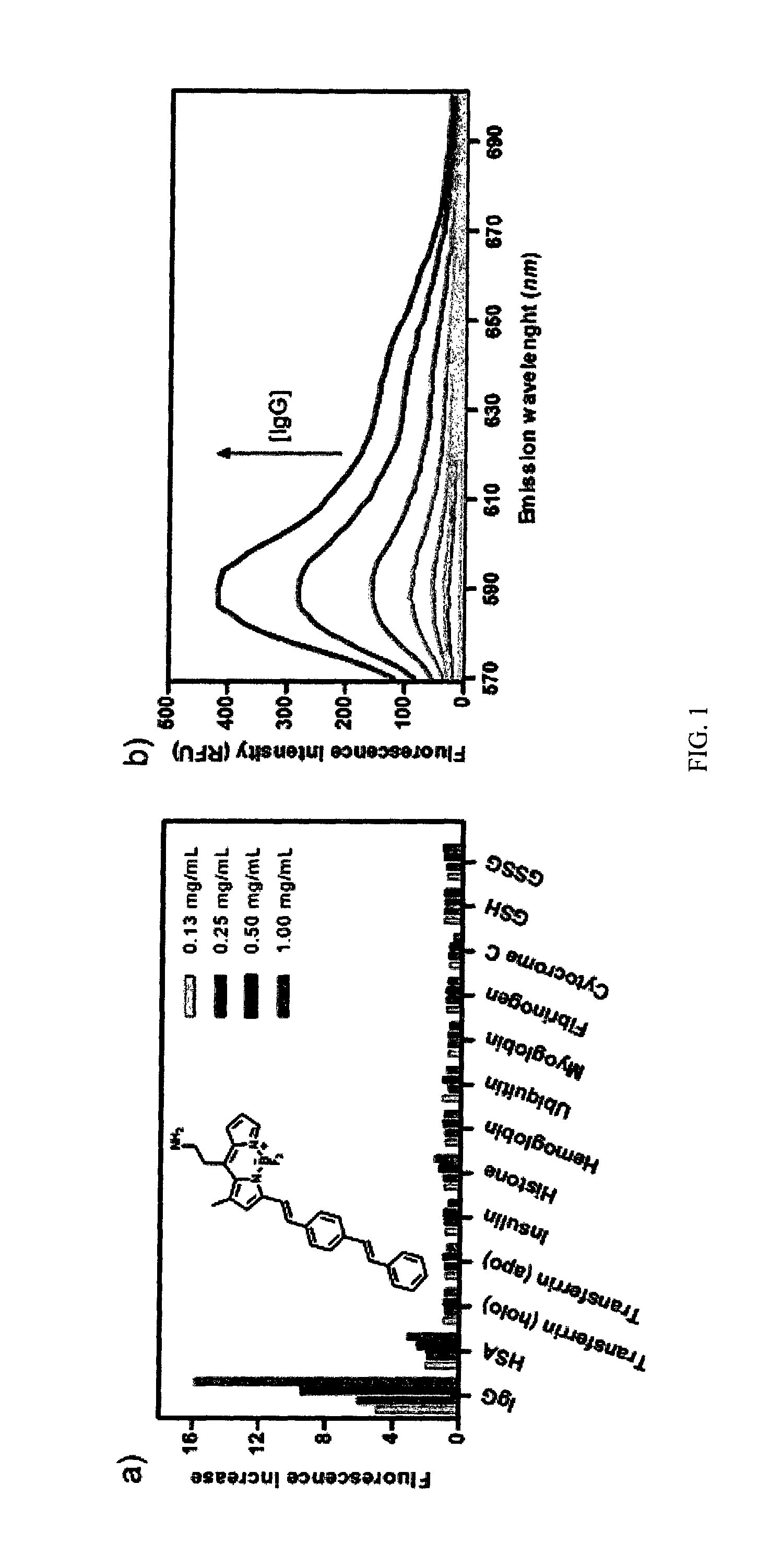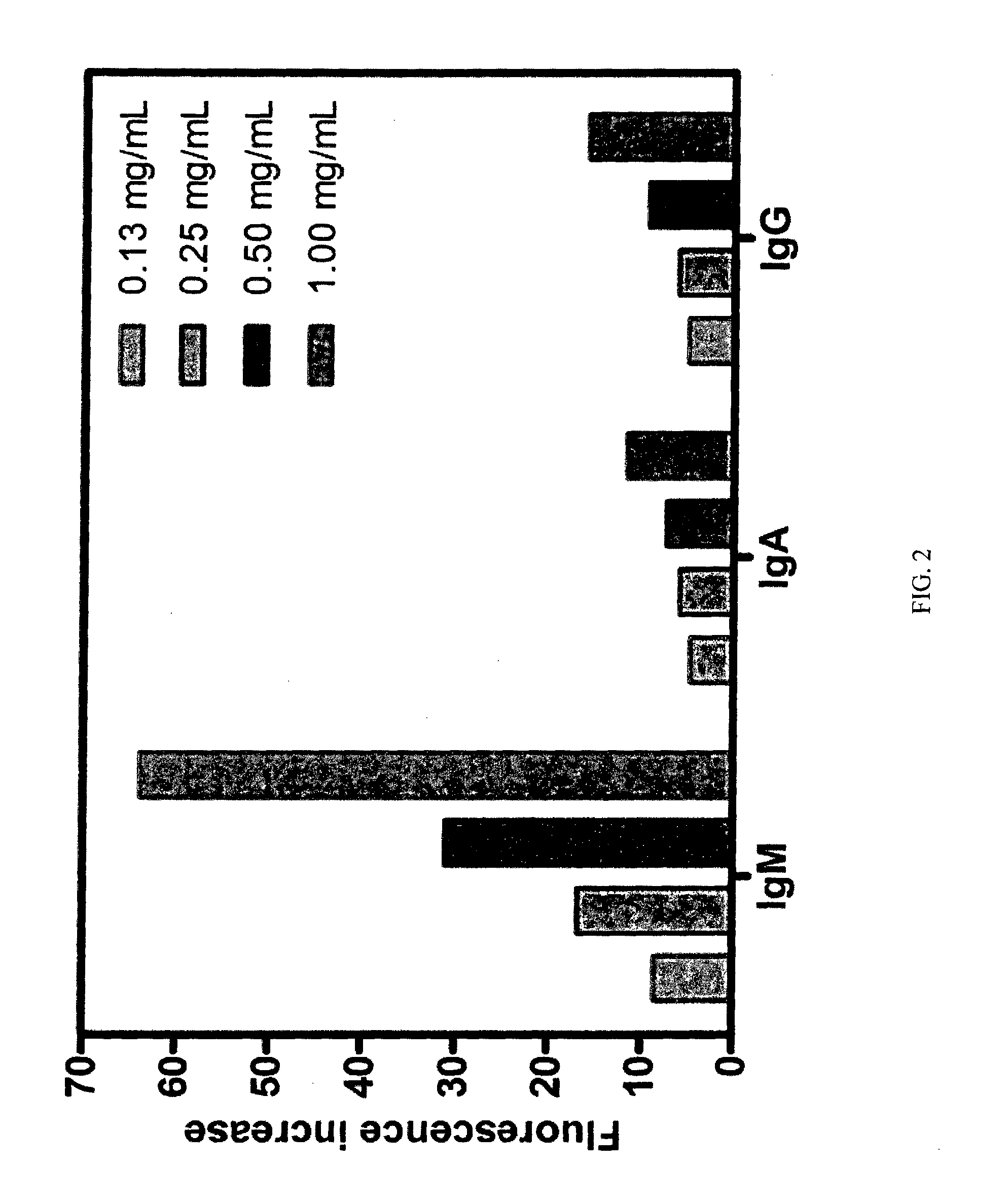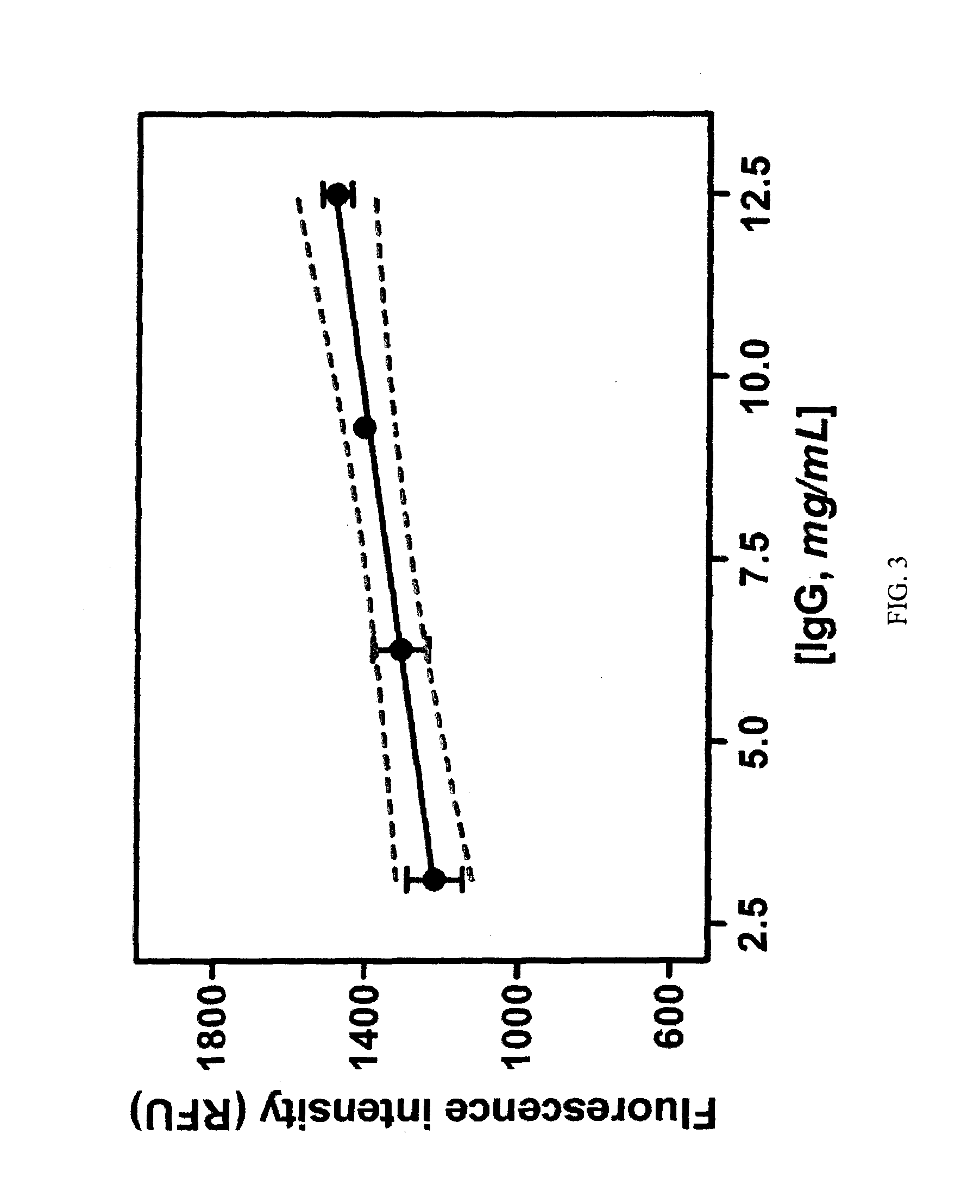Alkylamino BODIPY dyes as selective fluorescent probes for proteins and mouse embryonic stem cells
a technology of protein and mouse embryonic stem cells, which is applied in the direction of styryl dyes, group 3/13 element organic compounds, instruments, etc., can solve the problems of affecting the combinatorial derivatization of the bodipy scaffold, low recovery yield, and tedious purification of the bodipy dyes, and achieves low material recovery, high yield, and simple starting material
- Summary
- Abstract
- Description
- Claims
- Application Information
AI Technical Summary
Benefits of technology
Problems solved by technology
Method used
Image
Examples
example 1
Synthesis of the Alkylamino BODIPY Scaffold 3 and its Derivitization in Solid-Phase to Render BDM Compounds
[0127]Using relatively inexpensive starting materials (Fmoc-β-alanine and pyrrole), the 2-ketopyrrole 1 was prepared following slightly modified reported methods.23
(9H-fluoren-9-yl)methyl 3-oxo-3-(1H-pyrrol-2-yl)propylcarbamate (1)
[0128]Fmoc-β-Ala-OH (2.5 g, 8.0 mmol) was dissolved in dry THF. 2,2′-dipyridyl disulfide (2.7 g, 12.0 mmol) and PPh3 (4.2 g, 16.0 mmol) were added, and the mixture was stirred under N2 atmosphere at r.t for 24 h. In a separate flask, methylmagnesium bromide (12 mL of a 3.0 M solution in THF, 36.0 mmol) was added dropwise at −78° C. to a solution of pyrrole (3.3 mL, 48.0 mmol) in dry THF (50 mL). The mixture was stirred at −78° C. for 30 min and at −20° C. for another 30 min. Then the thioester crude mixture (after 24 h reaction) was added drop wise at −78° C., and the whole solution was stirred at −78° C. for 30 min and another 30 min at r.t. The rea...
example 2
Quantum Yield Measurements
[0135]Quantum yields were calculated by measuring the integrated emission area of the fluorescent spectra, and referring them to the area measured for Rhodamine B in EtOH after excitation at 510 nm (ΦRho-B=0.70). Quantum yields for the BDM products were then calculated using equation below, where F represents the area of fluorescent emission, n is reflective index of the solvent, and Abs is absorbance at excitation wavelength selected for standards and samples. Emission was integrated from 540 nm to 800 nm.
[0136]Φflusample=Φflreference(FsampleFreference)(ηsampleηreference)(AbsreferenceAbssample)
example 3
Screening the BDM Library
[0137]Fluorescence intensities were measured using a Spectra Max Gemini XSF plate reader in a 384-well plate. BDM compounds were dissolved to a final concentration of 10 μM (20 mM HEPES buffer, pH 7.4, containing 1% DMSO) and incubated with different proteins and peptides at different serial concentrations in 20 mM HEPES buffer (pH 7.4) (FIG. 1a). The excitation wavelength was set at 510 nm, and the emission spectra were recorded from 560 to 700 nm. Fluorescence fold increase ratios were determined by referring the maximum fluorescence intensity emission of BDM compounds in the presence of the screened proteins and peptides to the maximum fluorescence intensity emission of BDM compounds in 20 mM HEPES buffer (pH 7.4) (FIG. 1b).
[0138]Extended Screening of IgG Orange (BDM-69).
[0139]IgG Orange was dissolved to a final concentration of 10 μM (PBS buffer, pH 7.3, containing 1% DMSO) and incubated with human IgG, IgA and IgM at different concentrations in PBS buff...
PUM
| Property | Measurement | Unit |
|---|---|---|
| emission wavelength | aaaaa | aaaaa |
| excitation wavelength | aaaaa | aaaaa |
| excitation wavelength | aaaaa | aaaaa |
Abstract
Description
Claims
Application Information
 Login to View More
Login to View More - R&D
- Intellectual Property
- Life Sciences
- Materials
- Tech Scout
- Unparalleled Data Quality
- Higher Quality Content
- 60% Fewer Hallucinations
Browse by: Latest US Patents, China's latest patents, Technical Efficacy Thesaurus, Application Domain, Technology Topic, Popular Technical Reports.
© 2025 PatSnap. All rights reserved.Legal|Privacy policy|Modern Slavery Act Transparency Statement|Sitemap|About US| Contact US: help@patsnap.com



